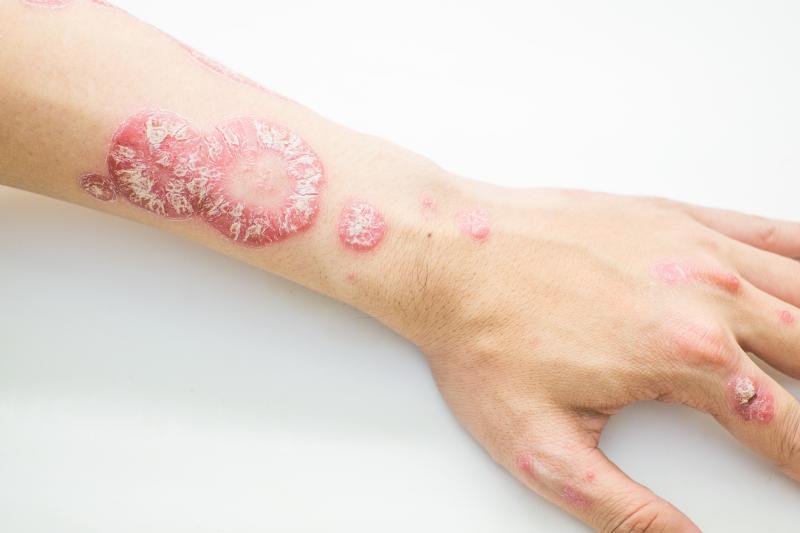
Ustekinumab is the biologic therapy most commonly used among patients with psoriasis, though its survival is better among those who are treatment-naïve, a new study has shown.
Researchers conducted a retrospective analysis of 195 psoriasis patients (mean age at first biologic administration, 51.3±14.5 years; 65.6 percent male) who had moderate-to-severe disease. Treatment response was assessed according to the Psoriasis Area and Severity Index (PASI). Treatments that could sustain response for up to 4 months were deemed effective. The switching of biologic therapy was also documented.
Majority (90.6 percent) of the participants achieved a reduction of 75 percent in PASI scores (PASI 75); 72.6 percent and 68.4 percent achieved PASI 90 and PASI 100, respectively.
Ustekinumab was the most commonly used biologic agent in the study (27.8 percent; n=47), followed by etanercept, adalimumab, secukinumab and infliximab. More than half (54.9 percent; n=195) changed agents at least once; 32.3 percent (n=63) switched once, 12.3 percent (n=24) switched twice and 10.3 percent (n=20) switched at least thrice.
The median overall drug survival in treatment-naïve patients was highest for etanercept, at 3.2 years. This was followed by adalimumab (2.8 years) and infliximab (2.5 years). Survival calculations for ustekinumab and secukinumab were impossible due to their later entry to the market. In this subpopulation, ustekinumab had a survival of >7.0 years and secukinumab of >1.8 years.
In patients who had previously been treated, survival rates of the different biologics were comparable. However, each previously used biologic agent significantly increased the likelihood of a subsequent switch by 20 percent.